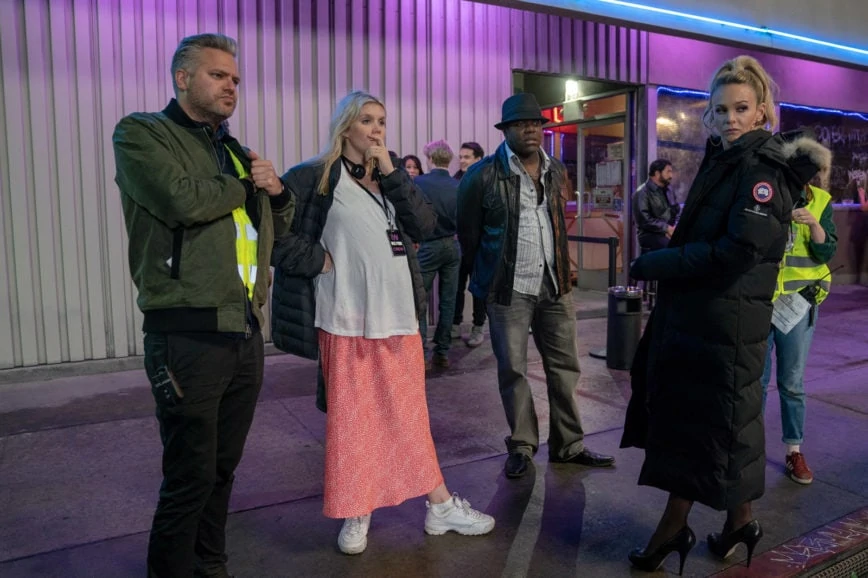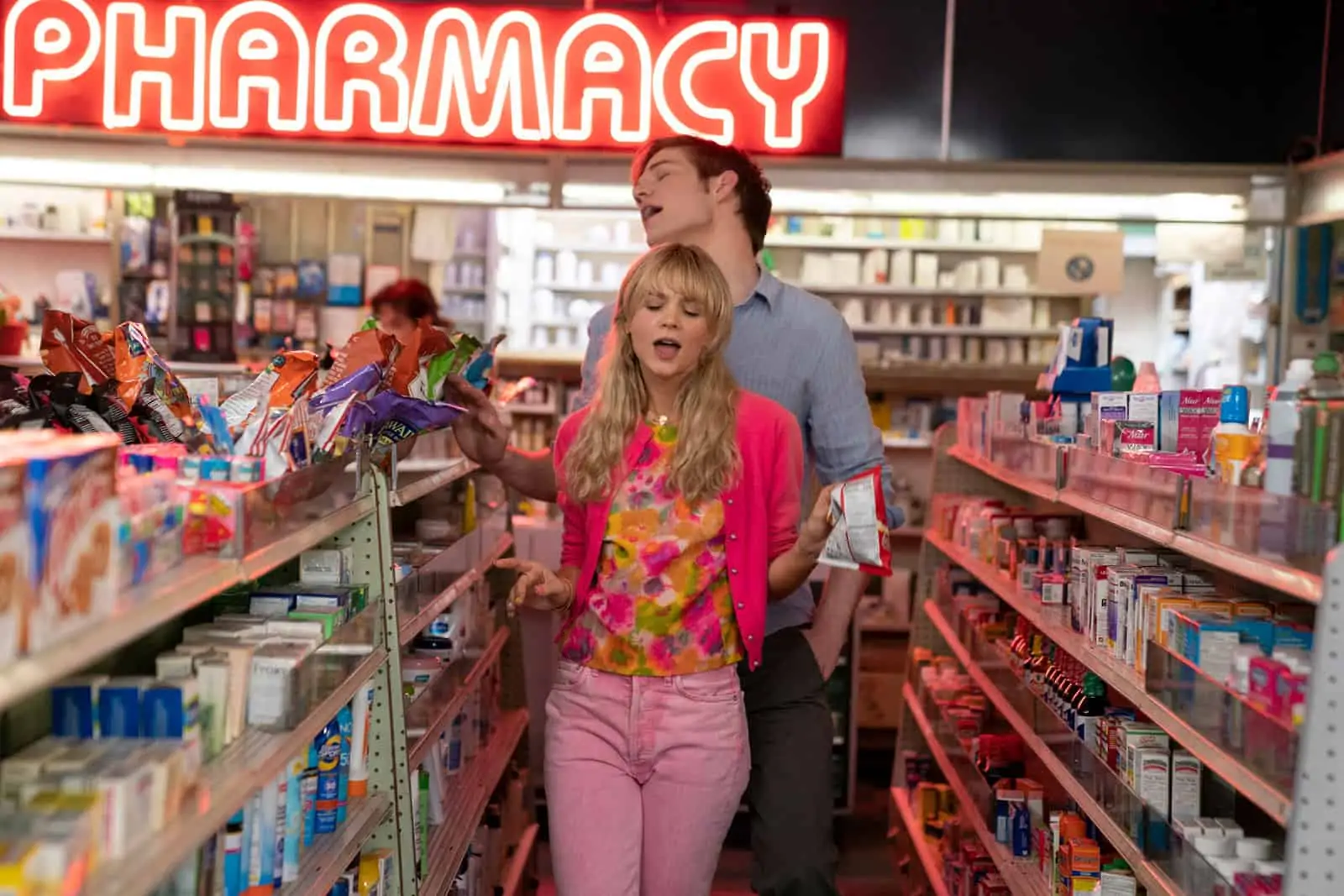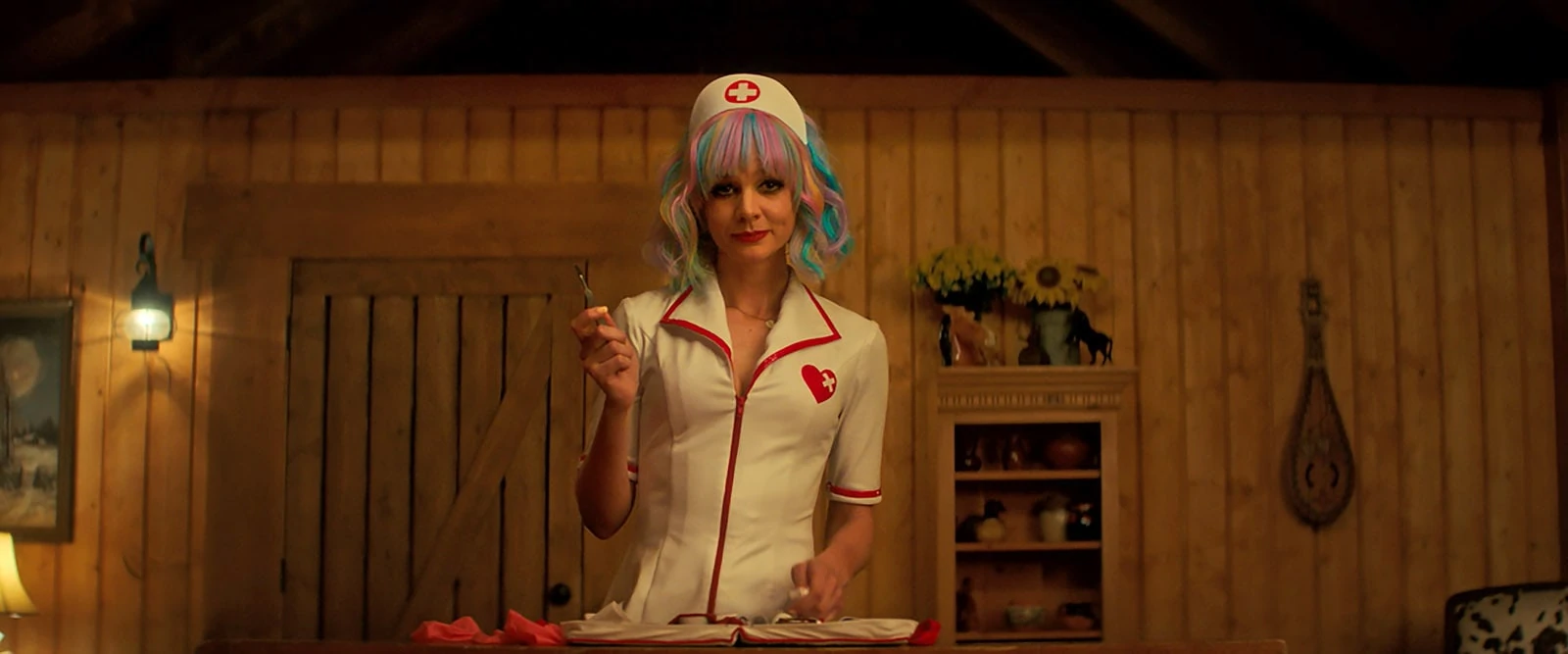SWEET REVENGE
Blurring the lines of genre and boasting a unique and distinct narrative concept, Promising Young Woman demanded filmmaking prowess and bold imagery that similarly did not follow conventions.
“Beautiful and dangerous.” Emphasis was placed on these words when Promising Young Woman director Emerald Fennell shared her vision of the film’s protagonist Cassie (Carey Mulligan) with cinematographer Benjamin Kračun. The adjectives succinctly encapsulate the refreshingly original rape-revenge psychological thriller – Fennell’s directorial debut – which juxtaposes shock value and filmmaking techniques aligned with horror movies with pastel colours and styling that would not look out of place in ‘90s rom-com Clueless.
“Even from our first brief meeting at Sundance Film Festival, I remember being impressed by Emerald. She’s very intelligent and has such a unique, dark sense of humour. I thought ‘I should keep an eye on what she does next’,” says Kračun. “Seven months later, she sent me the script for Promising Young Woman. The initial premise alone is just so intriguing – a young woman who has suffered a traumatic experience and seeks revenge, going on nights out, pretending to be drunk, and then turning the tables on sleazy men.”
[Emerald Fennell] had such a specific and distinctive view for the film which isn’t in line with what you might expect from such hard-hitting subject matter, which I found really interesting.
Benjamin Kračun
When they met to explore the core visual themes for the film, Kračun came bearing darker, more shadowy imagery from weighty dramas such as Gone Girl (2014) and Magnolia (1999). “Emerald’s look book was more colourful, with candy-coloured nails and bathrooms, and soft pastels – more along the lines of ‘90s romantic comedies. She had such a specific and distinctive view for the film which isn’t in line with what you might expect from such hard-hitting subject matter, which I found really interesting.”

Other creative stimuli included Alfred Hitchcock classics such as Vertigo (1958) and the character Suzanne Stone (played by Nicole Kidman) in Gus Van Sant’s To Die For (1995). Kračun and Fennell agreed that while the film’s aesthetics and form would draw upon classic cinema it did not have to be created in a conventional manner.
The imagination and originality of production designer Michael Perry (It Follows, Under Silver Lake) were also fundamental in producing the striking imagery the film is infused with, tying in with Cassie’s state of mind and building upon Fennell’s unique visual notions. “Michael experimented with certain primary colours from the outset. For instance, he decided that more blue tones would appear in the café which would be accentuated by a warm, soft light,” says Kračun.
Alongside the prominent pastel colours featured in the café, Cassie’s parents’ house where she still lives, and in a romantic scene in the pharmacy, neon heightens the narrative in select environments. “Emerald really liked Beast which I’d shot with director Michael Pearce. Although the narrative is quite different, they are both psychological dramas with a strong female lead and both use lighting to bring out the psychology of the film. For example, in the Blue Star bar where Cassie meets a variety of unsavoury men we used neon and harsher lighting to indicate the film was shifting gear.”

Lighting the nighttime exterior of the Blue Star bar, required Kračun and gaffer Jon McGinty to use 14 Astera tubes to illuminate under the awning along with four ARRI SkyPanels on a Condor hydraulic arm and then rate the camera at 320 ASA to capture the neon sign. They also added pools of orange light to act as streetlights using retro fitted square street light fittings. The one on the right was fitted with a 2K high pressure sodium and the one on the left with a 2K metal halide.
“Jon is a photographer in his spare time and really understands the shape and form of light, so it was great to have creative conversations with him about the visual aims for the film,” says the DP. “One major starting point was I didn’t want too much hard light on the characters, so we explored bounced light and how we could shine light through unbleached muslins. For interiors we might bounce light off the floor or a table to keep it as soft as possible and not highlight too much.”
Another scene, which Kračun is particularly fond of, uses inventive illumination to add another level to the narrative. In this pivotal moment Cassie is faced with the decision of whether to continue along the path of revenge. “As she sits on her bed in the dark looking at her laptop, I wanted it to appear as if the computer screen is almost breathing or beckoning to her. The art department created a screensaver that was timed with the Astera tubes around the room so a pulsating light would shine on Cassie’s face.”


AVENGING ANGEL
With filming taking place in physical locations in LA rather than studio sets, Kračun requested to fly from the UK a week earlier than planned to be involved in the location scouting. With a relatively short time in which to film – 23 days beginning on 22 March 2019 – he wanted to be part of as many initial conversations regarding the physical locations that would be chosen and disused spaces in which sets would be created for certain key scenes, such as the warehouse space the café set was built in. “Although the film was shot in LA, it’s meant to be an ‘everywhere’ kind of suburbia, so we had to select just the right specific locations to achieve this,” he says.
Spaces within a disused retirement home opened an array of options for multiple scenes. As it was an empty shell, much work was needed to ensure it had electricity and all the required appliances, but the versatility of the location made the additional tasks worthwhile. In contrast, another filming location – the ranch in which the penultimate scene plays out and which Kračun was not able to scout – was not free from complications.
“As we were filming following the terrible fires in California there were not a huge number of ranches available that the production’s budget could allow. We later discovered we would not be allowed to attach anything to the walls or rig any lighting to the ceiling at the ranch that had been selected.
“I had to light everything from the outside and, especially as it was a Phantom shoot, I needed a lot of light. So, we pulled the light through the windows and relied more on practicals, playing them slightly higher than I normally would have to light the large number of characters in the scene. A moment of panic turned into a moment of discovery, which often happens in filmmaking when you need to rethink something at speed. In the final grade those practicals were then set to the level I wanted.” That penultimate scene in the ranch combined an inventive use of close-up shots, high-speed shooting with a Phantom camera at 400 fps, and an abundance of light, to accentuate the grotesque nature of the male characters. “Emerald had an idea of getting up close to see the pores of their skin and filming that sequence in slo-mo to really place you in the moment as the characters gyrate and leer,” says Kračun.
The shots became more static when Cassie is at home or in her other safe space at the café where she works. Outside of that, the composition is more on edge and angular. It’s about playing with that juxtaposition again – dangerous and beautiful.
Benjamin Kračun

The cinematographer and Fennell were eager to be bold in their framing and for the camera to take on a predatory role at times. The view would become more subjective when, for example, Cassie is targeting her next victim in the bar, using the frame to almost push the men into the corner or encircle them with the camera.
“The shots became more static when Cassie is at home or in her other safe space at the café where she works. Outside of that, the composition is more on edge and angular. It’s about playing with that juxtaposition again – dangerous and beautiful,” says Kračun. “It was clear from the start that as much as Cassie turns the tables on the men she meets, the form and style of the film would do the same to the audience. They might feel like they are watching Clueless one minute and a very different film the next.”
PREDATORY PRODUCTION TECHNIQUES
Kračun filmed with the ARRI Alexa Mini and Panavision G Series lenses, having shot with the camera extensively and “knowing how far it could be pushed”. He suggested shooting anamorphic because Emerald is a fan of a more classic structure but wanted the film to venture into fairytale territory at times. “She had referred to Cassie being an avenging angel who dishes out forgiveness or punishment and that she would almost be entering the wolf’s den in certain critical scenes. I felt this idea of incorporating fairy tales and fantasy would align closely with anamorphic lenses. Although the theme of consent is a contemporary and poignant subject matter, Cassie’s world is not portrayed as entirely real. I also felt the G Series combined with the Alexa Mini creates a softer image reminiscent of some of the ‘90s films that inspired us.”
When deciding on the most appropriate “predatory” filming techniques to adopt, Kračun took note of wildlife documentaries, adopting a slow, almost imperceptible tracking movement that might similarly be used to capture a lion stalking its prey. “Emerald had written in very specific beats. She’s so precise and meticulous, like Cassie in a sense. We decided that in the beginning we would create a feeling of unease for the audience and then play with different tones throughout, some influenced by horror films such as A Nightmare on Elm Street. There’s a lightness to certain scenes, such as those she shares with love interest Ryan, but this contrasts to the more formal, cold and distant sequences observing Cassie on her revenge mission.”


Imaginative camera movements were at the forefront again for a scene that sees Cassie smash a car windscreen with a tyre iron. The sequence then moves to an interior shot of the car before elevating to reveal a wide shot of the freeway. This moment of release for the protagonist marks a significant change in direction in the film which up to this point has been more static, utilising creeping camera movements.
“This is comprised two shots – a single Steadicam shot captured by operator Mike McGowan which transition to handheld inside the car and then a shot from a ride-on crane to capture the wide angle of Cassie left standing at the crossing. Mike did an incredible job filming this with such precision. It also required extensive blocking with Carey regarding how the scene would play out,” says Kračun.
Grading was expertly handled by colourist Katie Jordan at Harbor Pictures in Santa Monica. “It was an amazing experience enhancing the overall image with Katie – keying into the pink in Cassie’s top or the vibrant carpet in her house to make it hyperreal. She was so skillful at isolating those elements that would help highlight the sensibility of Cassie at each stage in the story and really understood the unique tones we wanted to flow through the ambitious and compelling film.”










